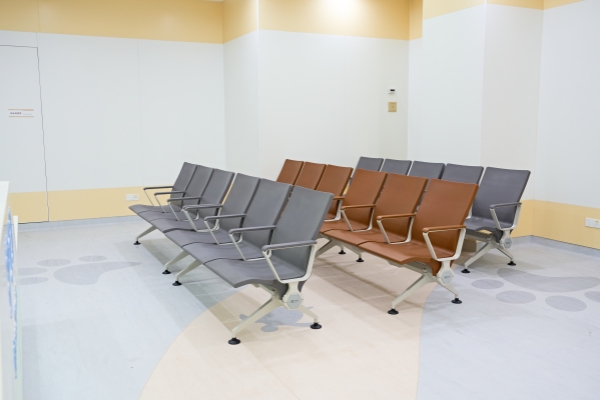In hospital space, the waiting area is one of the areas where patients and their families stay the longest, which directly affects the medical experience and the image of the hospital. As the core facility of this area, hospital waiting chairs must not only meet the functionality of high-frequency use, but also take into account comfort, durability, safety and overall space style. So how should hospital projects choose when customizing waiting chairs? The following is an item-by-item analysis for you.
1. Functionality first: not only "sit down", but also "sit well".
Hospital waiting chairs are different from ordinary public seats, and their design must consider the following functional elements:
Antibacterial and antifouling materials: Hospitals are special places, and the chair surface materials must have antibacterial, antifouling, and easy-to-clean characteristics. Common ones include PVC leather, non-woven fabrics, antibacterial coated metals, etc., which are convenient for daily wiping and disinfection.
Stable and durable structure: In the face of high-frequency use and large traffic, hospital waiting chairs usually use stainless steel, aluminum alloy or high-quality cold-rolled steel tripods to ensure strong load-bearing capacity and not easy to deform.
Ergonomic design: reasonable backrest angle, armrest design, and soft cushion can enhance the patient's comfort and reduce fatigue during waiting.
Modular combination: easy to flexibly configure according to the site layout, 3-person, 4-person, and even side table or wheelchair combination solutions are becoming increasingly popular.
Optional auxiliary functions: such as power interface between armrests, seat numbering, information card slot, etc., can also be customized according to hospital procedures.

2. Hospital waiting chair size planning: scientifically match space and flow of people.
1. Single seat vs. row design
Single chair (width 45-55cm): high flexibility, suitable for small and medium-sized hospitals or VIP areas.
Row chairs (each seat width 50-60cm): save space, suitable for crowded areas during peak hours.
2. Key size reference
Parameter Standard value Special needs adjustment
Seat height 42-46cm Pediatric area can be reduced to 35-40cm
Seat depth 40-45cm Elderly patient area can be deepened to 50cm
Backrest height 40-50cm Lumbar support needs can be increased
Layout suggestions:
The spacing between each row is ≥90cm (to meet wheelchair access).
Reserve ≥20cm clean space when placed against the wall.
3. Style is also important: medical space also needs "design sense".
Modern hospitals are no longer cold white spaces. Many new projects emphasize the design concepts of "humanistic medical care" and "environmentally friendly". The color, lines, and material selection of waiting chairs have also become an important part of hospital decoration.
Color matching: Different departments can choose different color schemes. Pediatrics uses bright and friendly colors, obstetrics and gynecology uses soft and warm colors, and the outpatient area should use simple and calm neutral colors.
Material style: Metal texture highlights professionalism and modernity, while wooden elements create a warm feeling; mixed materials can achieve both practicality and aesthetics.
Unified visual system: It is recommended that the waiting chairs maintain a unified style with the floor, wall, and guide system to enhance the overall spatial recognition and professionalism of the hospital.
The customization of hospital waiting chairs needs to take into account both functional practicality and humanistic care, and scientific design can be used to relieve the physical and mental stress of patients while waiting. Professional customization services can not only improve the efficiency of space use, but also convey the pursuit of detail quality by medical institutions.